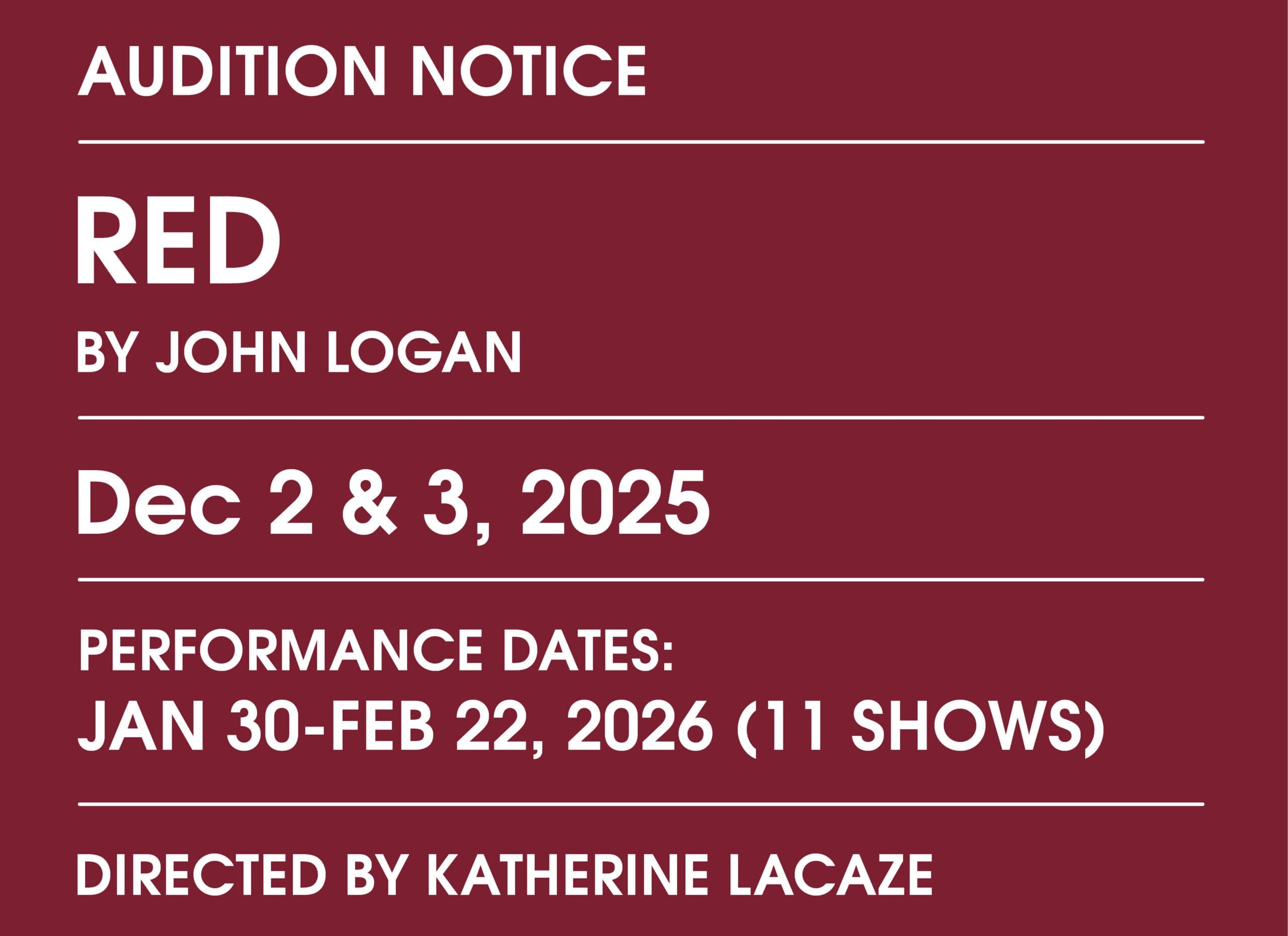
Audition Notice
RED
DATES: December 2 & 3, 2025
TIME: 6:30 p.m.
LOCATION: Coaster Theatre Playhouse
PERFORMANCE DATES: January 30-February 22, 2026 (11 shows)
WRITTEN BY John Logan
DIRECTED BY Katherine Lacaze
ART, CREATION, LIFE, AND RELAVANCE
Set in the 1950s, Red examines the transformative relationship between an artist and his creations. Master abstract expressionist Mark Rothko has just landed the biggest commission in the history of modern art, a series of murals for New York’s famed Four Seasons Restaurant. In the two fascinating years that follow, Rothko works feverishly with his young assistant, Ken, in his studio on the Bowery. But when Ken gains the confidence to challenge him, Rothko faces the agonizing possibility that his crowning achievement could also become his undoing. A raw and provocative portrait of an artist’s ambition and vulnerability as he tries to create a definitive work for an extraordinary setting.
CHARACTERS
Please note that the director is open to casting a non-male actor in the role of Ken. If cast, the actor must be willing to play the character as written. The gender and pronouns of the character will not be changed.
MARK ROTHKO – American painter, fifties or older. Born to a Jewish family in Latvia (then part of the Russian Empire), Rothko emigrated with his parents and siblings to the United States, arriving at Ellis Island in late 1913 and originally settling in Portland, Oregon. His canvases reflect deep philosophical inquiry and emotional resonance, and he is portrayed as confident and domineering. Tracing the evolution of his art reveals a man grappling with profound personal struggles, particularly his experiences with depression and existential contemplation. This internal conflict infused his paintings with a depth and intensity that resonated powerfully with viewers—and continues to do so. The actor playing this character should be prepared to do research on the artist and use that to develop the role for a highly realistic portrayal.
KEN – Rothko’s new assistant, twenties or thirties. An eager and inspiring artist, Ken responds to Rothko with the deference and respect one would expect, given their difference in age and status at the beginning of the play. His answers to Rothko’s probing questions about art and literature are short, tentative, often monosyllabic. But as their relationship deepens, Ken develops more confidence in addressing his employer, offering an analysis of Nietzsche or an explanation of why Rothko’s paintings need to be seen in order to live as works of art.